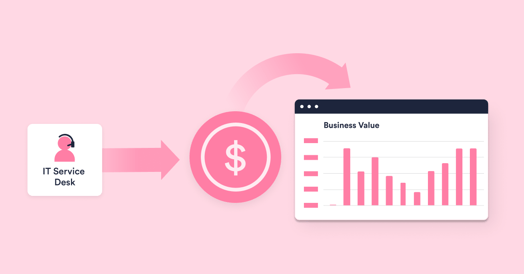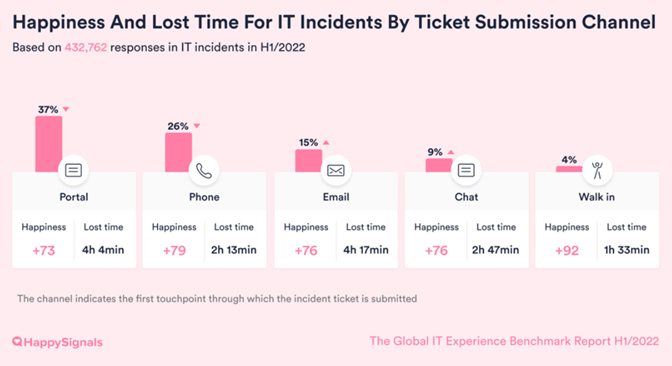There has been a long-held view that the IT service desk is a “cost of quality,” i.e. it’s an additional and unnecessary cost caused by a lack of quality in certain parts of the IT value chain. With IT issues – or “incidents” to use ITIL terminology – something that can be managed away by better IT service design, transition, and delivery practices.
This cost-of-quality view has caused many organizations to consistently drive down the cost of their IT service desk and the available budgets. This approach might have involved fewer, lower-paid staff. Or it might have involved outsourcing the service desk function in pursuit of lower costs (through economies of scale), higher quality (through best practice capabilities), and increased innovation – it’s the common outsourcing promise or at least the customer expectation of outsourcing.
But is this really in the best interest of the business?
Has the focus on IT support cost reduction really been the best option for CIOs and their senior management teams? After all, surely the cost of the lost employee productivity due to longer resolution times, and potentially failed resolutions, far outweighs the cost of handling a ticket?
This blog thus looks at the need to refocus IT service desk strategies from cost reduction to improving the business value of IT support, including the ability of all employees to do what they need to do when they need to do it. Where IT support needs to improve the level of employee productivity or – viewed through an IT service desk lens – to reduce the loss of productivity caused by delays and other failures in incident handling.
Why is the IT-support cost-reduction focus consistently seen as good?
As to why there has been so much focus on reducing IT support costs, your guess is as good as mine.
There are many possibilities, including that:
- IT support was a rapidly increasing cost as more and more technology was introduced to business operations
- The IT service desk is viewed as a negative thing – the aforementioned “cost of quality”
- Support is still seen as a labor- and thus cost-intensive IT activity
- The (perceived) quality of the support service is not seen as commensurate with the cost
- IT support is bundled in with the “keeping the lights on” costs that most IT organizations have been repeatedly told to minimize in favour of spending more of the annual IT budget on innovation-focused activities.
I’m sure that you can think of other reasons too.
But consider this – if you chop 33% of the cost of handling an incident ticket, you could save, let's say, approximately 5 dollars. However, how does this reduction in IT support capabilities impact the business? Your cost-cutting might have cost the business so much more than the 5 dollars that’s just been “saved.” In fact, we know it does!
Sadly, it’s suboptimal thinking and action.
“But what if we completely remove the need for IT support?”
It seems a sensible argument and ambition, but there are several barriers to this.
First, the IT service desk also covers service requests and requests for information-based help (in addition to incidents), so it’s not just a cost of quality. You might think, “We’ll simply use self-service and self-help for these – which will reduce the handling costs for such service requests.”
But please think again after looking at the following employee experience data – which shows the productivity currently perceived lost by employees using a self-service portal (based on 432,762 feedback responses in H1 2022) – employees are losing an extra 1h 51m in lost productivity compared to the phone channel.
Source: https://happysignals.com/happiness-score/
Then second, not every incident can be blamed on “the technology.” In fact, if you’ve ever worked on an IT service desk, you’ll appreciate that many incidents will have end-user mistakes or knowledge gaps as the root cause.
Finally, trying to banish all incidents can be viewed as analogous to managing credit card fraud – where, for financial institutions, the cost of totally removing fraud is more than the cost of accepting a certain level of fraud. And similarly, the cost of totally removing both technology and people-based IT issues is likely to be prohibitive – with reduction more sensible than elimination.
Thus, instead, there’s a need to optimize your IT support in a way that delivers the best outcomes for your organization. And contrary to the IT industry’s historical focus on costs, this might involve spending more on IT support rather than the decade-old strategy of reducing support costs.
Using employee experience to drive up employee productivity
Most organizations are measuring some form of customer satisfaction (CSAT) or employee satisfaction. Still, we believe that most organizations need greater insight into both the employee experience and the associated level of lost employee productivity to really get the required change started. Where, through better understanding and improving the employee experience, our customers are reducing the business impact of incidents and making their people and operations more effective.
There’s a definite need in 2023 for IT organizations, and their IT service desks, to move from “delivering more with less” strategies to investing in the available resources on things that matter to end-users as measured by experience data.
Leveraging employee experience data to better meet Your CIO-role priorities
If your 2023 priorities are similar to those of other CIOs, then you’ll likely be focused on some or all of the following:
- Improving change leadership and management
- Enabling organization and strategy alignment
- Increasing customer engagement through improved CX
- Becoming critical to the enterprise
- Getting managers onboard with data
- Increasingly customer-focused internally and externally
Creating the business case for employee experience management
Our customers have already done this. They looked at the aggregated employee experience data we’ve collected and published during the last six years before justifying doing the same internally. Recognizing the gulf between what an incident costs to handle and the cost of the lost productivity associated with poor employee experiences.
Then, by better understanding the causes of employee unhappiness and unnecessarily lost productivity, they can improve operations such that happiness increases and the lost productivity drops. The employees served by the best-run IT support organizations now only lose an hour of productivity versus the average of three hours.
Importantly, this potential two-hour saving far outweighs any additional IT support spend incurred in delivering a better employee experience – it’s the financial backbone of the business case for refocusing on employee experience strategies for your IT service desk.
For more help and insight into building the business case for employee experience management, please check out this blog. To learn more about how employee experience management will deliver both happier end users and better business outcomes for your organization, then please contact our team for a chat. You can also book a meeting with us directly using this link.





